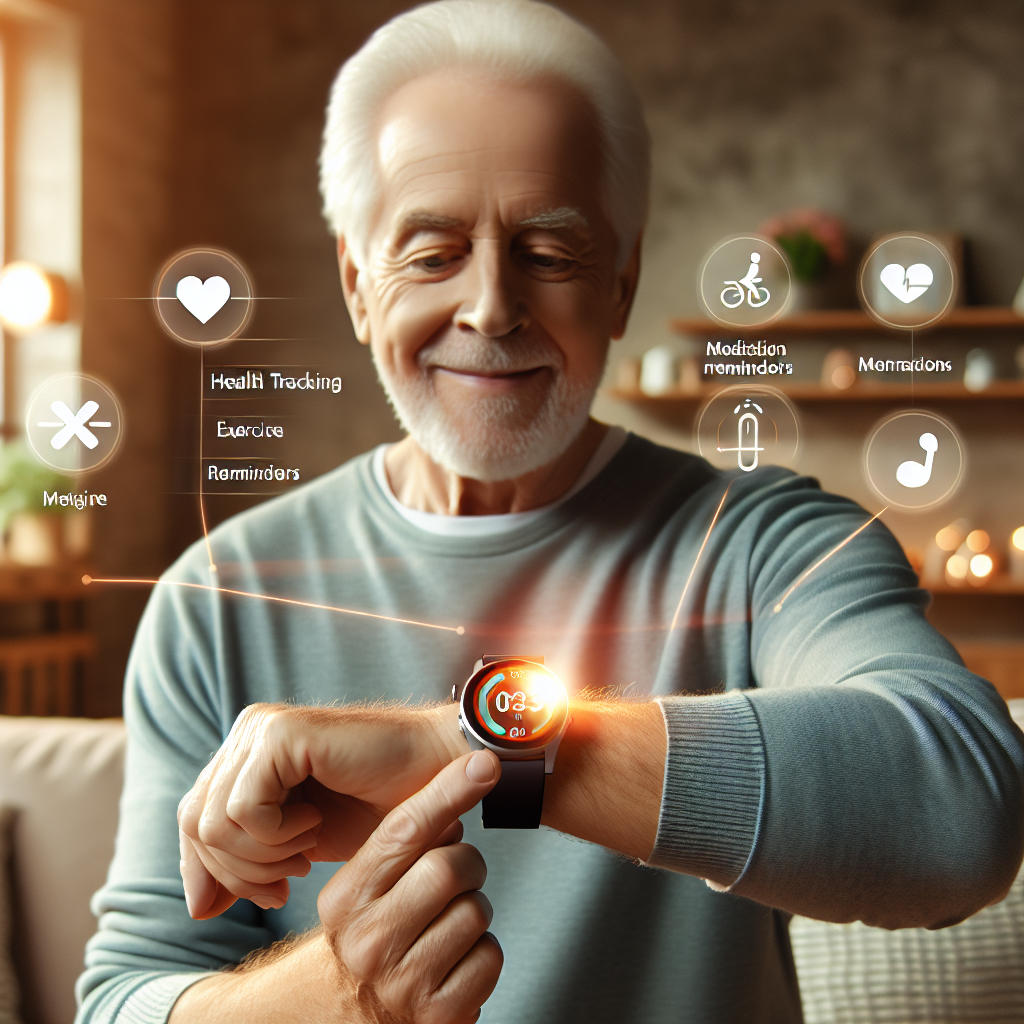Remember when the word “retirement” conjured images of rocking chairs and quiet afternoons? Those days are fading fast! Today’s retirees are embracing cutting-edge technology to create vibrant, engaging golden years filled with new experiences. Virtual Reality (VR) is at the forefront of this revolution, opening doors to digital adventures that were unimaginable just a decade ago.
As technology evolves, Virtual Reality is redefining what it means to enjoy retirement, offering boundless possibilities for adventure, learning, and connection.
Virtual Reality uses special headsets and controllers to transport users into immersive, three-dimensional environments where they can see, interact, and experience new worlds without leaving the comfort of home. For retirees, this technology isn’t just a novelty—it’s becoming an essential tool for enhancing quality of life in numerous ways.
As we witness technological advancements reshaping retirement, VR stands out as particularly transformative. Unlike passive technologies that we merely consume, VR invites active participation and engagement, making it uniquely suited to address the holistic needs of seniors in their golden years.
How VR Benefits Retirees’ Overall Well-being
The benefits of VR for retirees extend far beyond simple entertainment. This technology offers a comprehensive approach to well-being that addresses physical, emotional, cognitive, and social aspects of health—all crucial components of a fulfilling retirement.
Perhaps most significantly, VR is proving to be a powerful antidote to one of retirement’s most persistent challenges: loneliness. According to recent studies, VR experiences that encourage social connection have successfully helped address feelings of isolation among older adults. By participating in virtual community events, group activities, or even simply sharing virtual spaces with others, retirees can maintain and build meaningful connections regardless of physical limitations or geographic barriers.
“We’ve seen remarkable improvements in mental health outcomes among seniors who regularly engage with VR,” notes a researcher from a recent study on VR benefits for retirees. “Participants showed reduced symptoms of depression and anxiety, along with reporting higher levels of life satisfaction.”
This emotional uplift makes perfect sense when we consider that VR creates opportunities for joy, accomplishment, and social engagement—all key ingredients for mental well-being at any age, but particularly vital during retirement years when traditional sources of these experiences may diminish.
Getting Physical with Virtual Reality
VR fitness programs help seniors stay active while experiencing beautiful virtual environments
One might assume that a technology involving headsets would be sedentary, but VR for retirees actually encourages physical movement in safe, engaging ways. Many VR applications are specifically designed for gentle exercises and activities that improve mobility, balance, and coordination.
Take Betty, a 78-year-old who was hesitant to join exercise classes due to her arthritis. Through a VR program offering low-impact tai chi in a serene virtual mountain setting, she’s now “exercising” three times weekly without even thinking of it as exercise.
“I forget I’m doing something good for my body because I’m so focused on the beautiful surroundings and the movements,” Betty explains. “My balance has improved tremendously, and I look forward to my virtual tai chi sessions every week.”
Research confirms Betty’s experience isn’t unique. Clinical trials have demonstrated that VR treadmill training improves balance and reduces falls among elderly participants. For conditions like Parkinson’s disease or multiple sclerosis, VR offers customized programs to help manage tremors, improve gait, and enhance stability—all crucial for maintaining independence.
Traveling the World Without Leaving Home
Virtual tourism allows seniors to explore world wonders without the physical demands of travel
Perhaps one of the most magical aspects of VR for retirees is the ability to travel virtually anywhere in the world. Financial constraints, mobility challenges, or health concerns often limit travel during retirement years, but VR eliminates these barriers, offering rich, immersive experiences of destinations both real and imagined.
John, an 82-year-old retired teacher who always dreamed of seeing the Egyptian pyramids but never had the opportunity, recently “visited” them through a VR headset at his senior living community.
“The experience was extraordinary,” he shares. “I felt like I was actually standing there in the desert, looking up at these massive structures. I could turn in any direction and see different angles, even explore inside. It wasn’t just watching a documentary—it felt like I was there.”
Beyond famous landmarks, VR allows retirees to revisit meaningful locations from their past—childhood neighborhoods, former workplaces, or vacation spots filled with happy memories. These virtual journeys can trigger powerful emotional responses and provide opportunities for reminiscence, which has proven therapeutic benefits for emotional well-being.
Keeping Minds Sharp Through Virtual Challenges
Cognitive engagement is another area where VR shines brightly for retirees. As we age, maintaining mental acuity becomes increasingly important, and VR offers immersive brain exercise that feels nothing like homework.
VR applications designed for cognitive stimulation offer puzzles, strategy games, and memory challenges in three-dimensional environments that are both engaging and effective. Research indicates that well-structured VR programs can play a crucial role in cognitive preservation, potentially slowing decline associated with aging.
Maria, 75, participates in a weekly VR cognitive training program and has noticed improvements in her memory and problem-solving abilities. “The virtual reality games make me think in different ways,” she explains. “I’m solving puzzles, remembering sequences, and making quick decisions—all while having fun in these fascinating virtual worlds. I feel more mentally alert in my daily life too.”
The immersive nature of VR means participants often engage for longer periods and with greater focus than with traditional cognitive exercises. This extended engagement translates to more significant benefits for brain health, making VR an increasingly valuable tool in maintaining cognitive function during retirement years.
Revolutionizing Healthcare Experiences
Beyond lifestyle enhancements, VR is making substantial inroads into medical care settings, transforming how retirees experience healthcare. Rehabilitation programs are incorporating VR to make therapy more engaging and effective, while pain management protocols are using immersive environments to reduce discomfort without increasing medication.
Post-stroke recovery offers a compelling example of VR’s therapeutic potential. Virtual environments can be customized to help patients relearn movements and rebuild neural pathways in engaging, measurable ways. Rather than repeatedly lifting a weight in a clinical setting, a stroke patient might pick virtual apples in an orchard or cast a fishing line into a virtual lake—activities that feel purposeful while accomplishing the same therapeutic goals.
“We envisioned early on that Virtual Reality would profoundly enhance the quality of life and health outcomes for seniors,” notes Chris Brickler, co-founder of a company developing VR solutions for senior care. “The results we’re seeing in rehabilitation settings confirm this vision is becoming reality.”
Pain management represents another promising application, with studies showing that immersive VR experiences can significantly reduce pain perception by diverting attention and activating the body’s natural pain-modulating systems. For retirees managing chronic pain conditions, this non-pharmaceutical approach offers welcome relief with no side effects.
The Future of Retirement in Virtual Realms
As VR technology continues to evolve, becoming more accessible, affordable, and user-friendly, its potential to enrich retirement experiences will only grow. We’re just beginning to tap into the possibilities that virtual reality offers for retirees seeking vibrant, engaging golden years.
What makes VR particularly aligned with SilverSmart’s philosophy is how perfectly it supports the view that retirement represents an opportunity for self-discovery and personal fulfillment. Far from signaling disengagement, retirement with VR tools becomes a journey of exploration, learning, and meaningful connection.
The combination of accumulated wisdom with the time freedom of retirement creates unlimited possibilities for growth—exactly what SilverSmart champions. VR simply amplifies these opportunities, allowing retirees to pursue new interests, develop skills, and engage with communities in ways that might otherwise be physically or logistically challenging.
Consider how VR enables lifelong learning—another cornerstone of SilverSmart’s approach. Virtual classrooms can transport retirees to interactive history lessons at historical sites, art workshops in museum settings, or language immersion experiences in foreign countries. These engaging educational opportunities keep minds active while opening doors to new passions and interests.
“What I appreciate most about virtual reality is that it helps me continue growing as a person,” says Robert, a 79-year-old VR enthusiast. “I’m learning new things, meeting different people, and having experiences I never thought possible at my age. Retirement isn’t about slowing down—it’s about exploring in new ways.”
This sentiment perfectly captures the spirit of retirement that SilverSmart promotes—one where each new pursuit enriches life’s story and creates a more complete, fulfilling experience.
As VR technology becomes more mainstream in retirement communities and individual homes, we’re witnessing a profound shift in how society views aging. The stereotype of retirement as a period of decline is being replaced by a vision of exciting new beginnings filled with freedom, creativity, and possibilities for growth.
Virtual Reality for retirees isn’t about escaping real life—it’s about enhancing it in meaningful ways that address the full spectrum of human needs: physical activity, mental stimulation, emotional connection, and purposeful engagement. By embracing this technology, today’s retirees are pioneering a new vision of the golden years—one that’s active, connected, and filled with continuous discovery.
As SilverSmart continues to champion retirement as life’s most fulfilling chapter, VR stands as a powerful ally in this mission, breaking down barriers and opening new horizons for those with the wisdom to appreciate them most. The digital adventures available through virtual reality aren’t replacing real-life experiences—they’re expanding what’s possible during a life stage rich with potential for joy, growth, and meaningful connection.
Ready to Explore Virtual Reality?
If you’re interested in experiencing the benefits of VR for yourself or a loved one, many senior centers now offer VR programs. Alternatively, consumer VR headsets have become more affordable and user-friendly than ever before.
Remember: The digital adventure is just beginning, and it’s never too late to join the journey!

